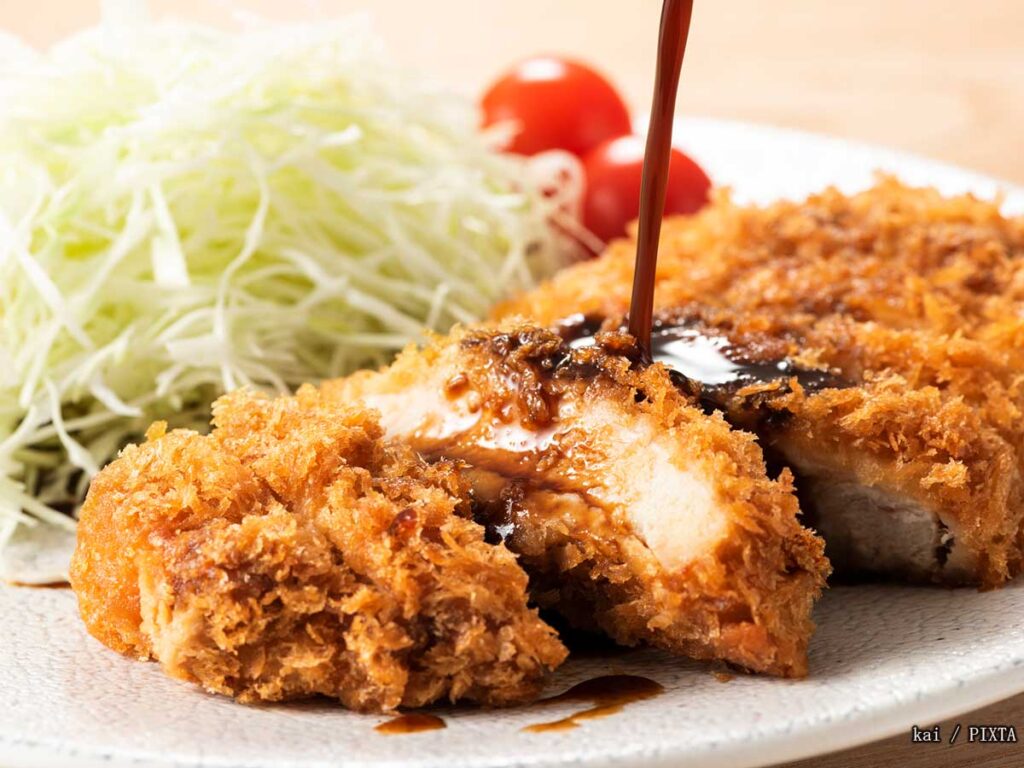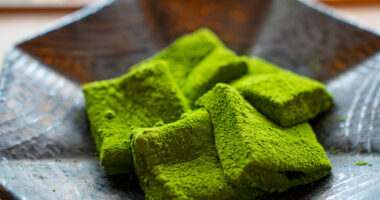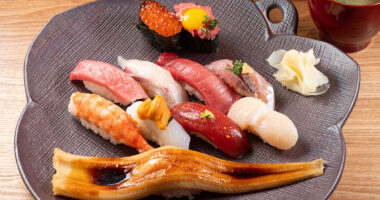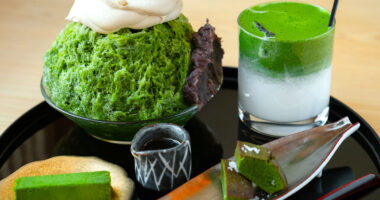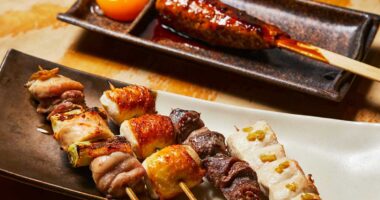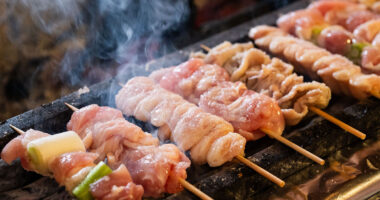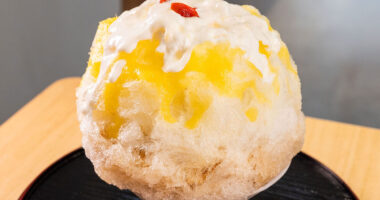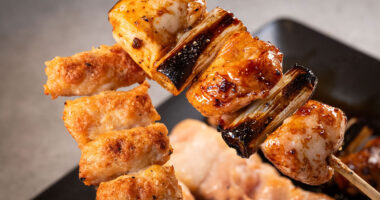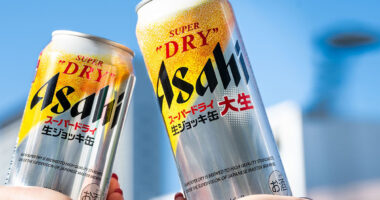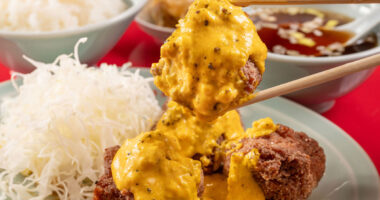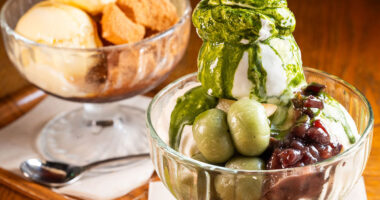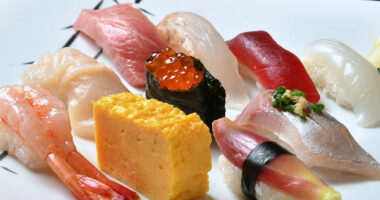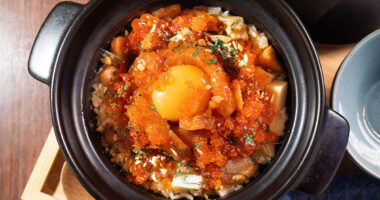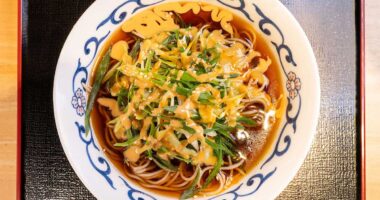When dining in Japan, you’ll often find a variety of condiments at your table, each enhancing your meal in unique ways. From familiar soy sauce to more adventurous spices, these seasonings aren’t just extras—they’re a key part of the flavor experience.
In this guide, we’ll walk you through the most common tableside condiments found at different types of restaurants, what they are, and how to use them like a local. Elevate your meal and savor Japan’s rich culinary culture with confidence!
Ramen & Gyoza
- Garlic: Garlic, called ninniku in Japanese, is a popular condiment served at ramen restaurants in Japan. It can be available minced, in the form of dried garlic chips, or even both, depending on the store. When added as a topping, it adds a robust and punchy flavor that becomes even more pronounced if you mix it thoroughly with the broth!
- Surigoma ground sesame seeds: Ground sesame seeds are a popular ramen condiment that adds a rich, nutty flavor and a subtle crunch. A spoonful of these will provide toasty notes that go perfectly with the savory nature of ramen.
- Chili oil, soy sauce, and vinegar: This trio of condiments can be widely found at both ramen and gyoza restaurants (sometimes one-in-the-same), however, they’re seen as particularly essential to the gyoza experience. When enjoying ramen they can be used to change the flavor profile of the broth, but when eating gyoza they are used to make your preferred type of gyoza dipping sauce.
- Black pepper: Black pepper is often available at restaurants that serve ramen and gyoza. For ramen, it adds a nice peppery kick to the broth. As for gyoza, one popular alternative to the aforementioned dipping sauce is a simple mixture of vinegar and black pepper, which gives your dumplings a tangy and spicy kick.
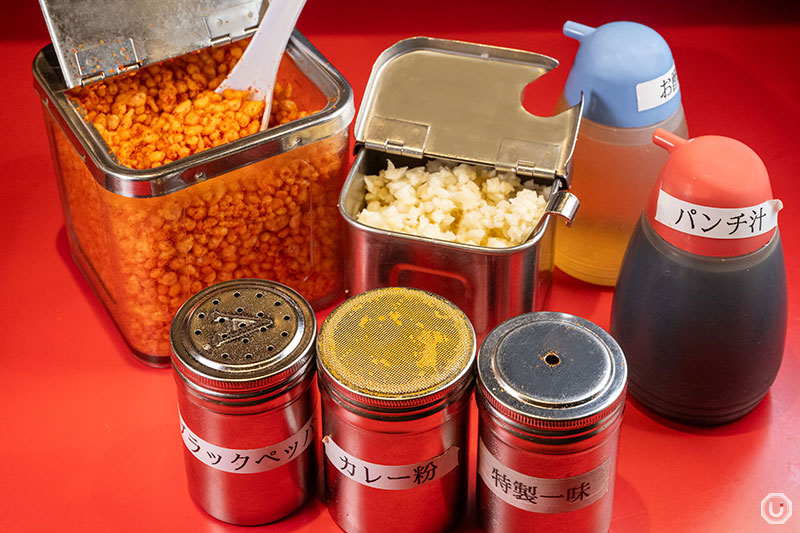
A number of ramen toppings, including garlic from Yarōramen Shibuya Center-gai Souhonten
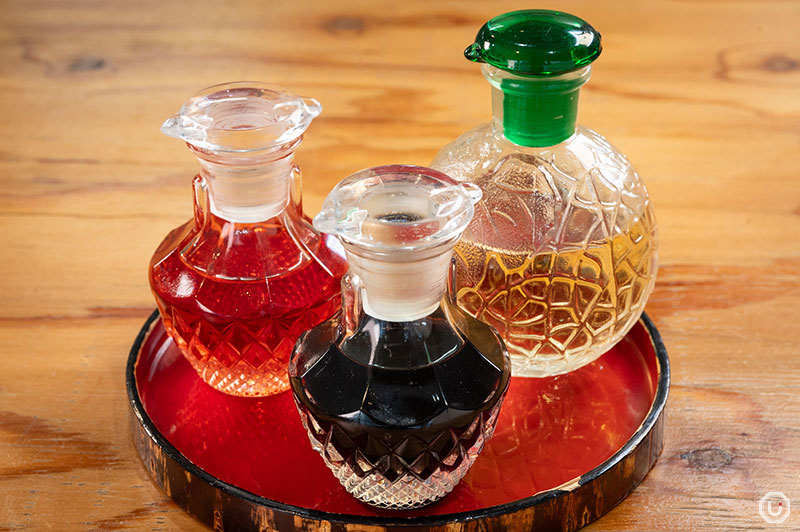
Soy sauce, chili oil, and vinegar from KITTTAN GYOZA
Some restaurants offer their own premade original gyoza dipping sauce, but often you make your own from these three. The chili oil adds a spicy kick, while the soy sauce provides a rich umami depth and the vinegar introduces a tangy brightness. You can customize the ratio of each for your own preferred flavor by pouring and mixing in a small saucer.
Tonkatsu
- Tonkatsu sauce: Tonkatsu sauce is a thick, tangy-sweet condiment usually made from fruits, vegetables, vinegar, and spices. It’s similar to Worcestershire sauce but with a richer, sweeter flavor, perfectly complementing the crispy fried pork cutlet. Drizzle it over your tonkatsu and enjoy!
- Japanese karashi mustard: Karashi is a type of Japanese mustard with a bold, sharp heat that adds a spicy kick to dishes. Unlike many Western mustards, karashi has no vinegar, making its flavor more intense and clean. Just using a little dab of it can add a lot of heat.
- Rock salt: Rock salt, sometimes served with tonkatsu, is a simple but elegant way to enjoy the natural flavors of the dish. The coarse salt brings out the umami flavor of the pork without overpowering the dish. You can lightly sprinkle it over your tonkatsu or simply dip your pork in to scoop some up.
- Goma sesame seeds: Goma sesame seeds add a nutty texture and aroma to tonkatsu. They are often served in a bowl and a mortar is provided. You can grind them to your desired texture to pair with your tonkatsu. Often, diners will pour tonkatsu sauce into the freshly ground sesame seeds to combine flavors and allow them to coat the tonkatsu easier when dipping.
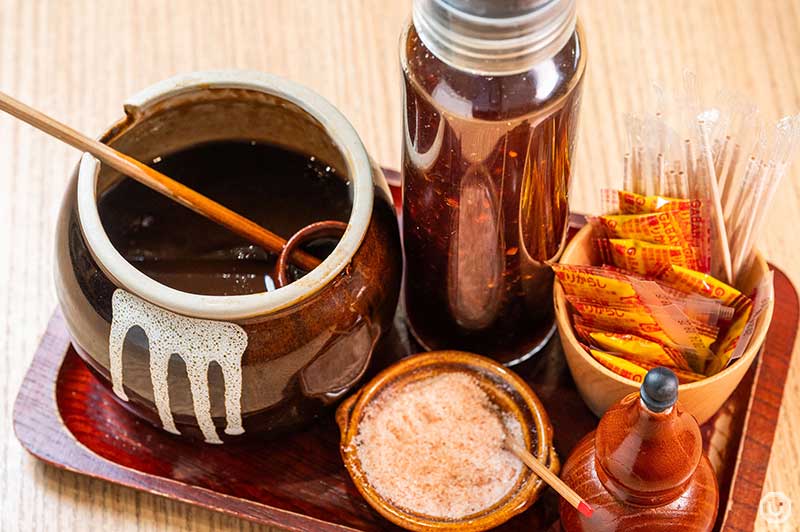
Tonkatsu sauce, rock salt, and karashi at Tonkyu Ueno
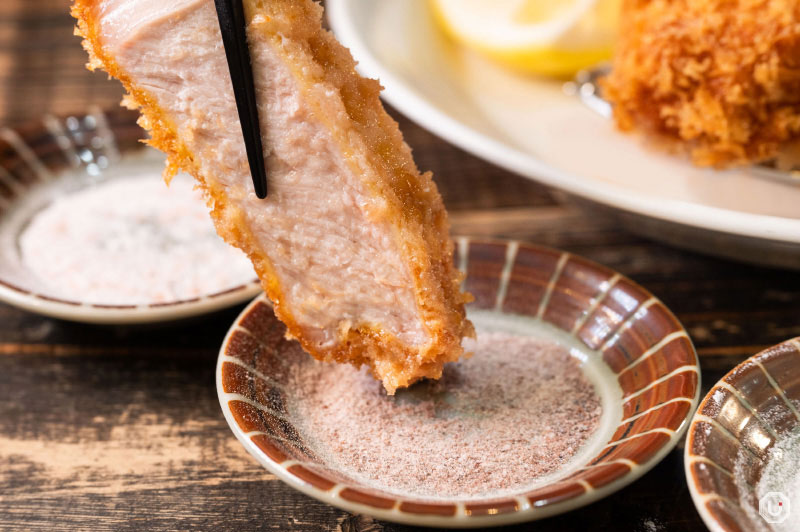
Tonkatsu being enjoyed with rock salt at Tonkatsu Aoki Asakusabashi
Yakitori
- Tare or shio seasoning: When you order skewers at a yakitori restaurant, you’ll often be asked whether you want your skewer seasoned with tare (sweet soy sauce-based glaze), or shio (salt). This ultimately comes down to preference. Feel free to try out multiple skewers to see which type you prefer for each one! Please note that some yakitori restaurants have predetermined seasonings for some of their skewers.
- Yuzu koshō: Yuzu kosho (a paste of chili pepper and Japanese citrus) adds a refreshing heat and tangy brightness that perfectly complements the smoky, grilled flavors of the chicken. You only need a little dab to elevate the flavor of each skewer!
- Shichimi spice: Shichimi, also known as shichimi tōgarashi or “seven-spice blend,” is a flavorful Japanese seasoning made from a mix of chili pepper, sesame seeds, orange peel, seaweed, and other aromatic ingredients. Lightly sprinkle it over your skewer or on the side of a plate for dipping, and add some pleasant spice to your yakitori.
- Sanshō pepper: Sansho, or Japanese pepper, is a unique spice with a bright, citrusy flavor and a subtle numbing effect, similar to Sichuan peppercorns. Use it as you would shichimi, and enjoy its refreshing numbing sensation.
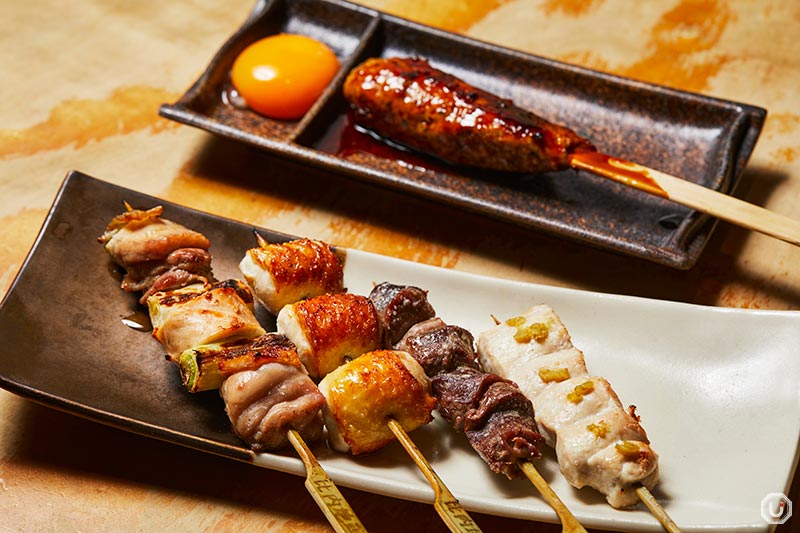
An example of tare (top) and shio (bottom) yakitori at Shinjuku Imaiya Honten
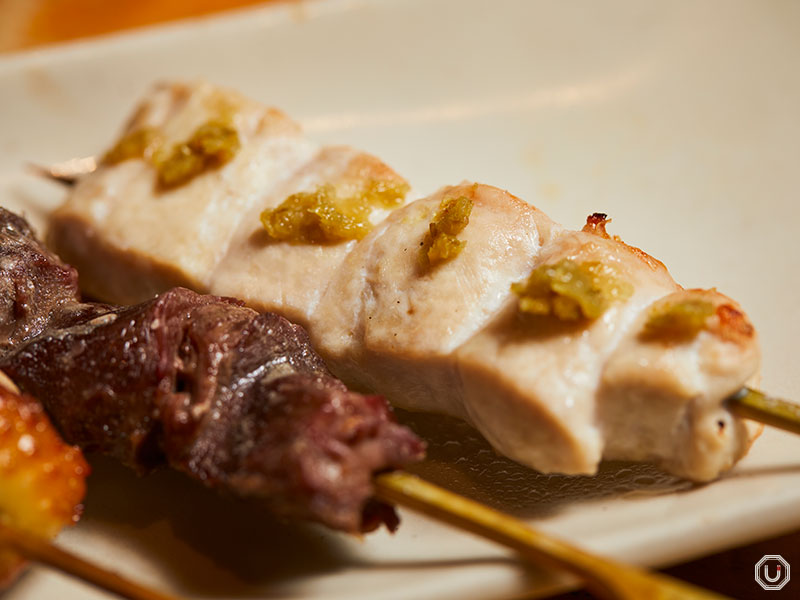
Yuzu kosho-topped yakitori at Shinjuku Imaiya Honten
Yakiniku
- Tare dipping sauce: At yakiniku restaurants, tare is savory-sweet sauce used for dipping grilled meat. While many restaurants offer original and multiple blends, common ingredients include soy sauce, mirin, sake, sugar, and other seasonings.
- Citrus: Yakiniku restaurants often offer bottled citrus juice or sauce as a lighter dipping alternative. Sometimes, rather than a dip, actual slices to squeeze over your grilled food are provided. The citrus used can vary, but often lemon, yuzu, or sudachi citrus are used. Its refreshing tartness makes it a good pair for all types of grilled meats and vegetables.
- Gochujang chili paste: A thick, fermented Korean chili paste, gochujang is a go-to condiment for spice-lovers often served at yakiniku restaurants. Packing a combined flavor of sweetness, heat, and umami, it can be used simply as is, but also mixed in with the tare to create a spicy dipping sauce.
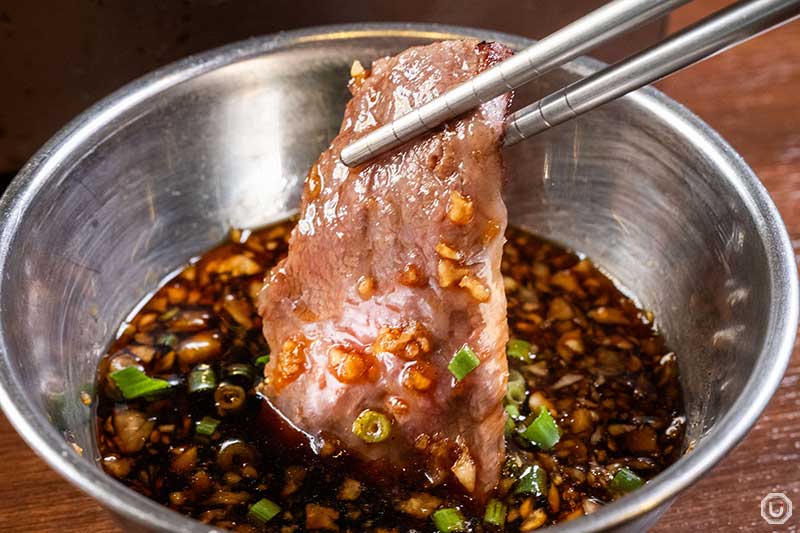
Meat dipped in tare at Bouya Horumonkan Uenorokuchōme
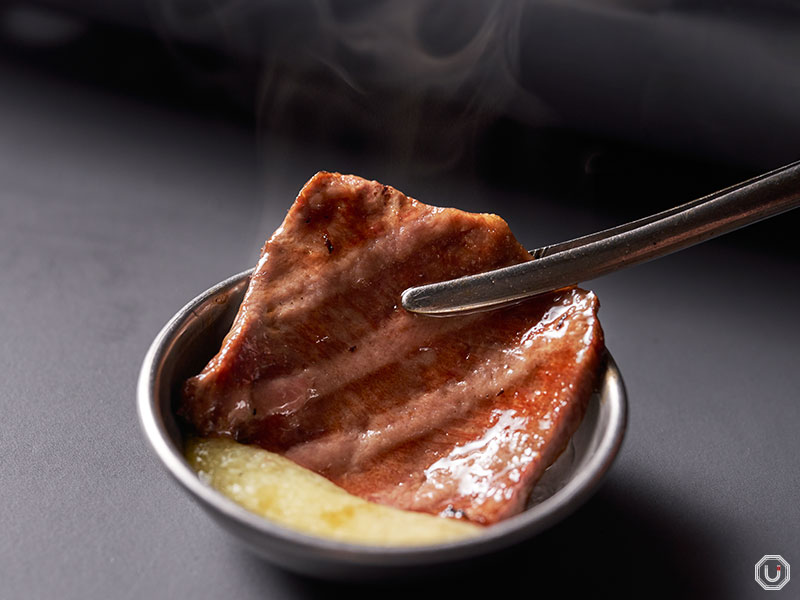
Yakiniku dipped in Sudachi citrus sauce at YAKINIKU MARUUSHI GINZA HONTEN
As many yakiniku restaurants serve plates with separated dishes for multiple dipping sauces, be sure to try each one!
Tempura
- Tentsuyu dipping sauce: This is a delicate dipping sauce served with tempura, typically made from a blend of dashi, soy sauce, and mirin. Its light and refreshing taste doesn’t overpower the natural flavor of tempura ingredients.
- Grated daikon radish: Grated daikon radish, often served alongside tempura, can be enjoyed on its own for its refreshing palate-cleansing taste, but is usually mixed into the tentsuyu to add a light, zesty element to the dipping sauce. Try it both ways!
- Salt: Sometimes, a coarse sea salt or specialty salt is provided, allowing diners to sprinkle it directly onto the crispy tempura. This minimalist approach highlights the fresh, natural taste of the ingredients while adding a satisfying crunch.
- Matcha salt: It may come across as a surprising condiment to use on tempura, but matcha-infused salt is quite a popular and refined way to elevate your tempura meal. This salt adds a touch of bitterness and enhances the natural umami flavors of the tempura, complementing the light, crispy texture. Sprinkle lightly or dip to try out tempura in a way you may never had before!
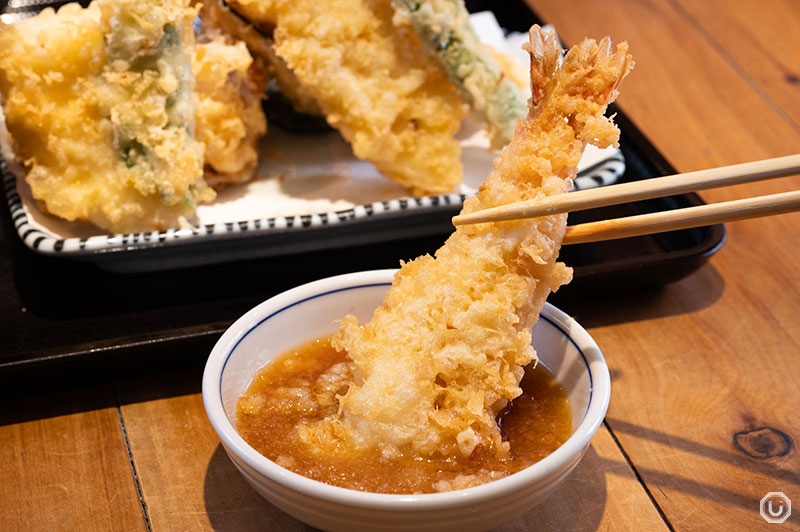
Tempura dipped into tentsuyu mixed with grated daikon radish at Tenkichiya Shinjuku
Curry
- Fukujinzuke Japanese pickles: Fukujinzuke are a traditional Japanese pickled vegetable condiment often served with curry, featuring a medley of finely chopped vegetables like daikon, eggplant, and cucumber. They add a burst of flavor and crunchy texture to the dish, so help yourself to a spoonful!
- Rakkyō pickled shallots: Rakkyō refers to both the vegetable and the pickled version but when served with curry, it typically means the pickled form. Like Fukujinzuke, pickled rakkyo adds a crunchy texture and a light, refreshing taste that that adds great balance to the dish.
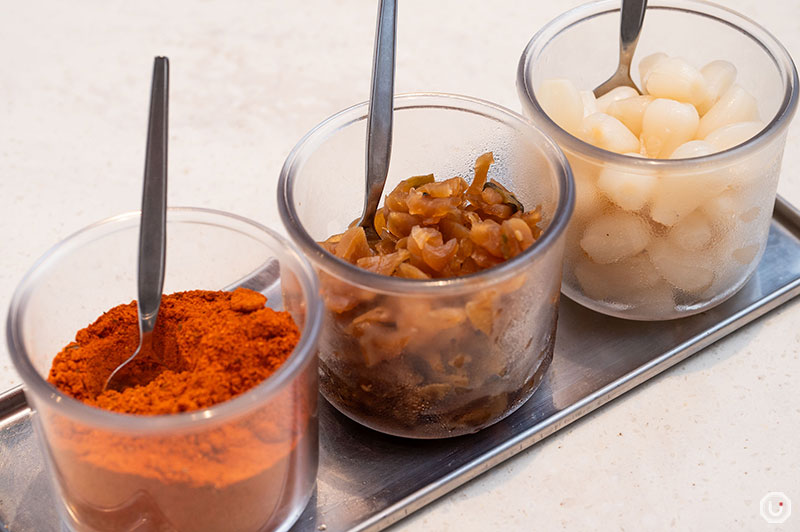
Spice blend (left), Japanese sweet pickles (middle), and pickled shallots (right) at Gourmet Curry Bon Goût NEWoMan Shinjuku store
At many Japanese curry restaurants, these condiments are self-serve, so feel free to add and mix more during your meal for a combination of changing flavors.
Okonomiyaki
- Katsuobushi bonito flakes: Katsuobushi, or bonito flakes, are a key topping at okonomiyaki restaurants, adding a savory umami punch to the dish. Sprinkled on top of hot okonomiyaki, these delicate flakes dance and curl from the heat, enhancing the rich flavors and providing an inviting presentation.
- Aonori seaweed: Aonori, or green seaweed flakes, are another popular condiment commonly served at okonomiyaki restaurants. These aromatic flakes have a slightly briny, oceanic taste that complements the savory elements of the okonomiyaki. They also add a nice touch of color to the popular dish.
- Okonomiyaki sauce: Okonomiyaki is generously drizzled in a savory, umami-packed sauce, adding a sweet and tangy flavor that perfectly complements the ingredients. It provides the essential flavor to the dish, so if you have a chance to make it yourself, don’t hesitate to add more.
- Japanese mayonnaise: Japanese mayonnaise is another popular condiment topping for okonomiyaki. If you’ve never had Japanese mayo, it has a distinct creamy and slightly tangier flavor compared to some of its international counterparts, so definitely give it a good drizzle to try it out!
- Oil: Oil, called abura in Japanese, is essential to a delicious okonomiyaki experience. If cooking the okonomiyaki by yourself, brush it on the griddle before cooking to to help achieve the ideal golden-brown color of crispy texture.
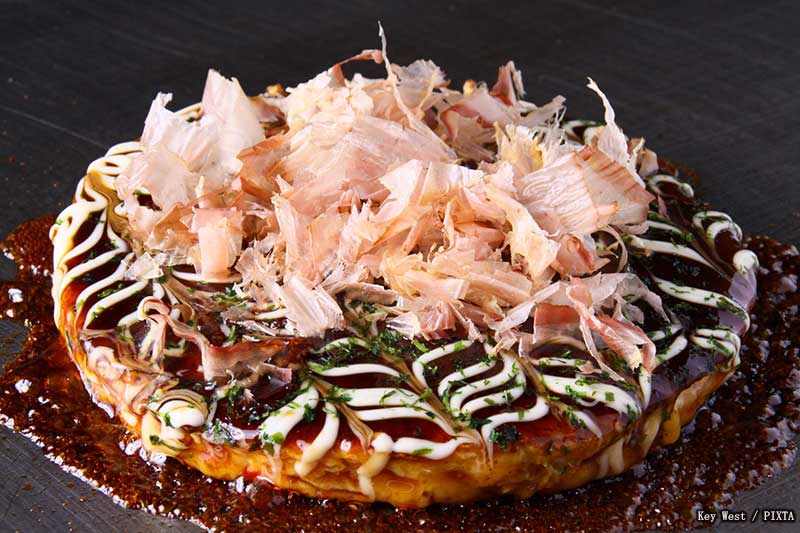
Okonomiyaki topped with aonori, katsuobushi, and mayonnaise (photo for illustrative purposes)
Restaurants in Japan have a wide variety of condiments and seasonings available to enhance the deliciousness of your meal. We hope this guide helps you fully enjoy the variety of condiments available to elevate your dining experience in Japan!
